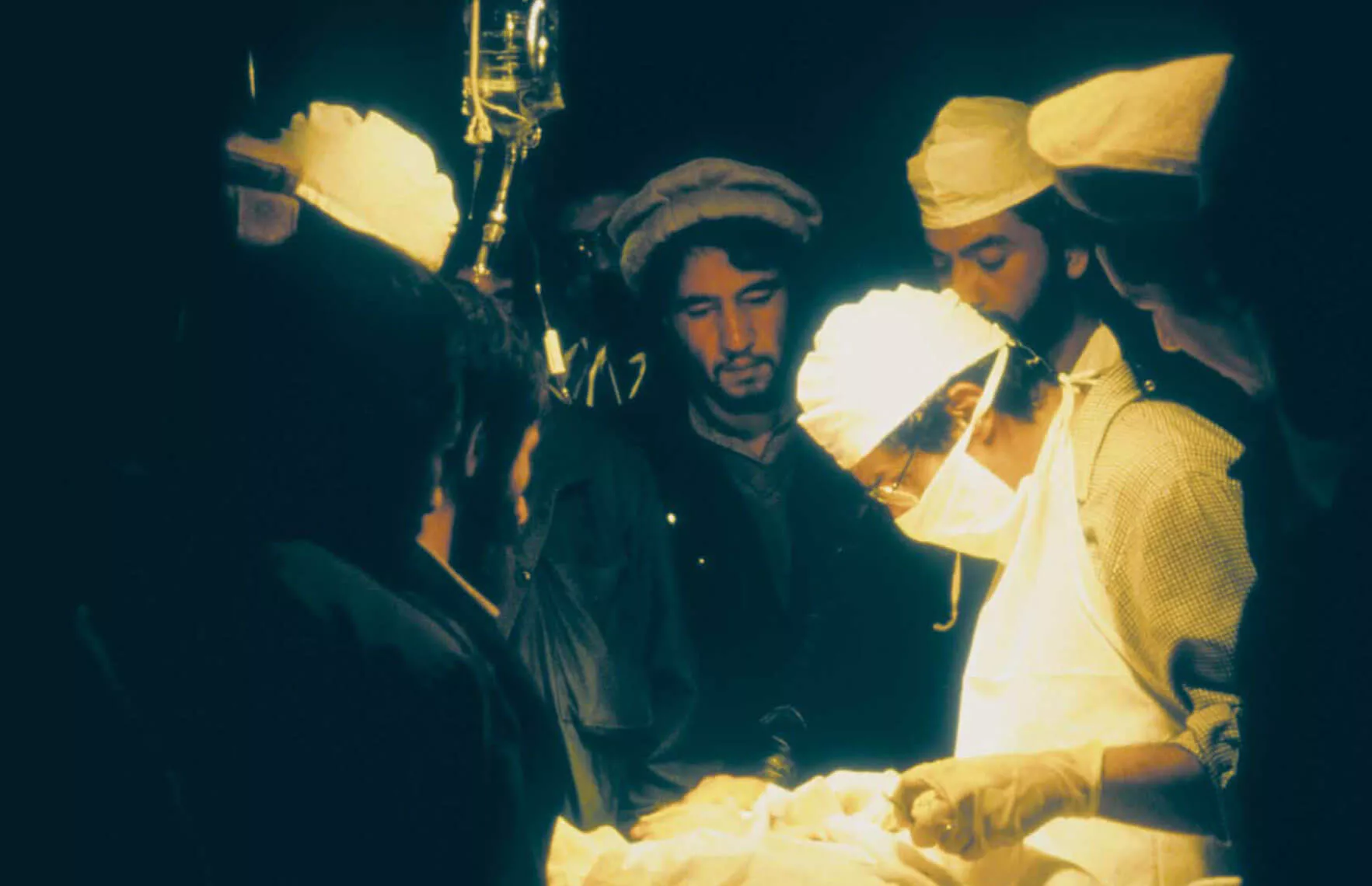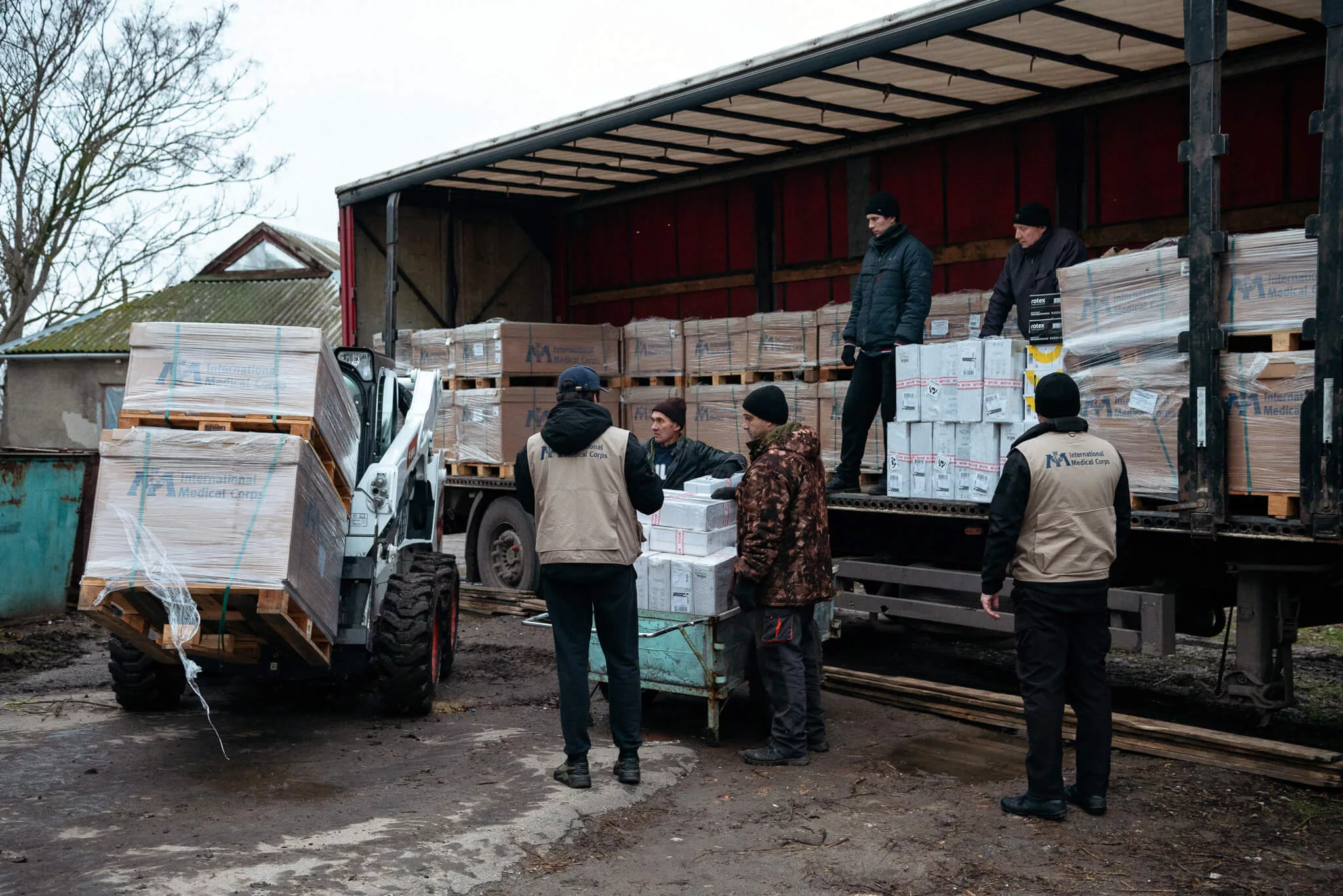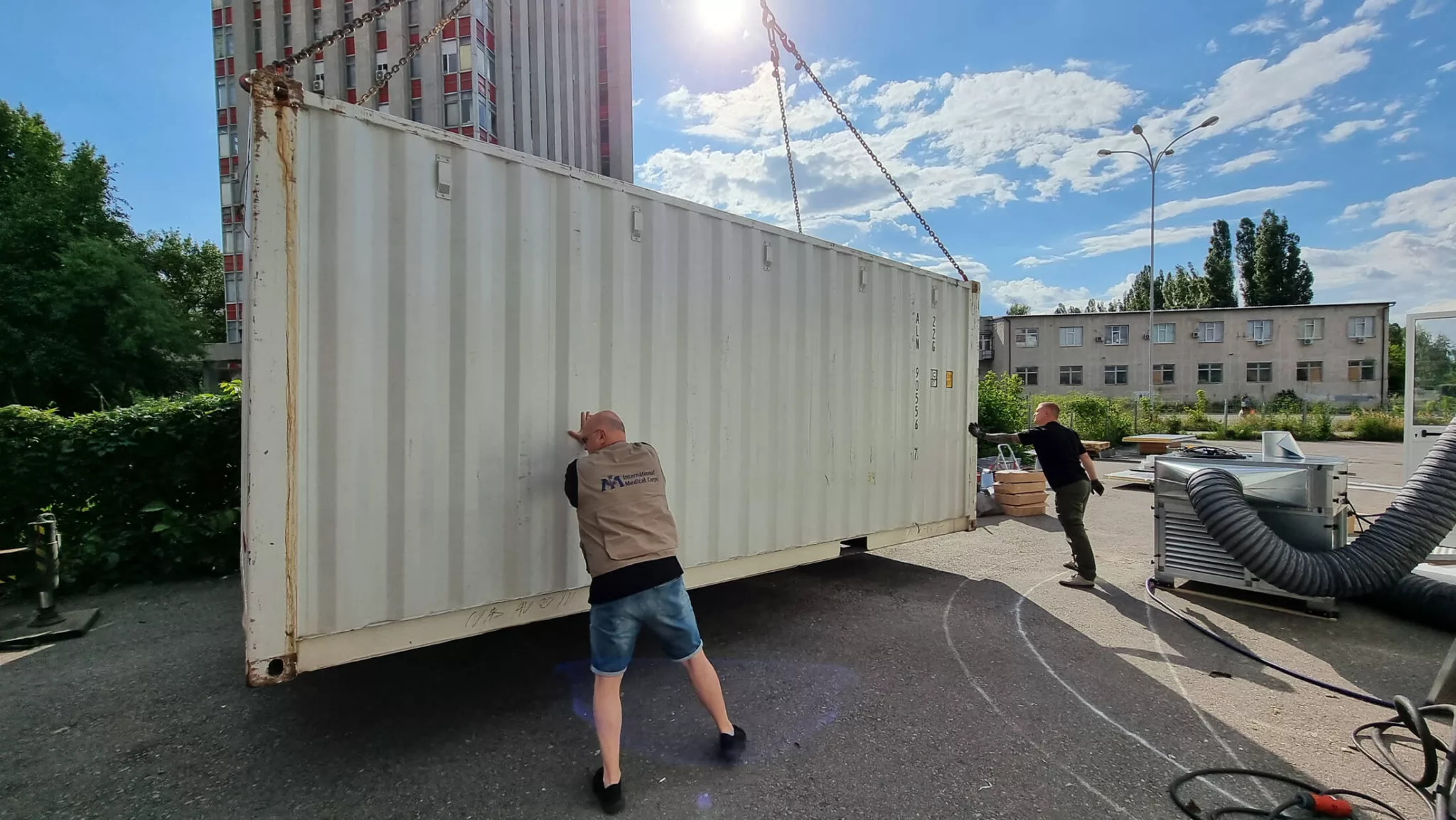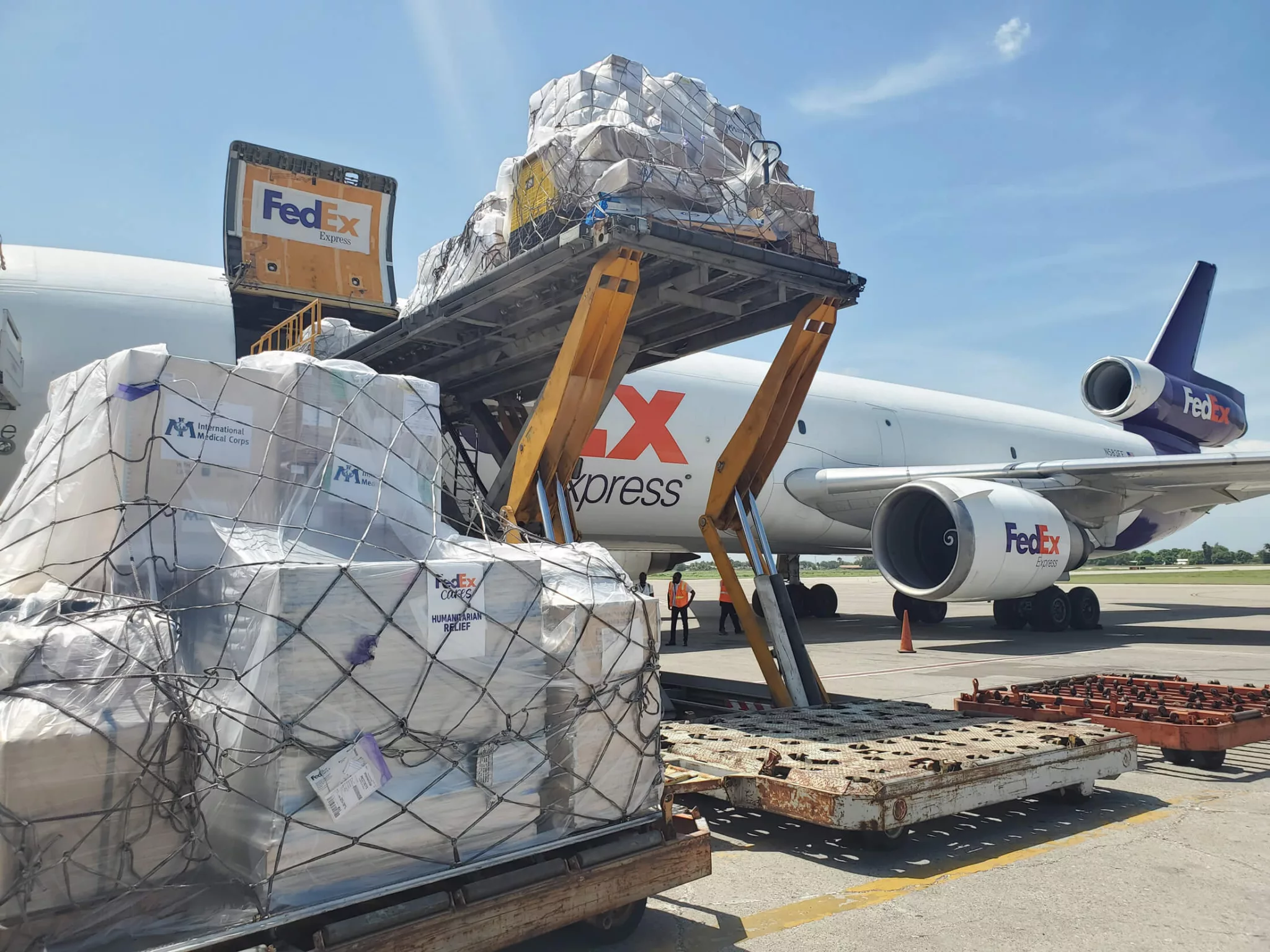Logistics: the process of planning and executing the efficient procurement of goods, services and works, and the transportation and storage of those goods from the point of origin to the point of consumption or end use.
Few areas of work at International Medical Corps have undergone greater change since we launched our first humanitarian mission in 1984 than logistics—the task of providing everything that’s required for our field teams to deploy quickly anywhere in the world, then keep those teams going, sometimes for years, as they work to make a difference in the lives of people affected by conflict, disaster or disease.
That first mission, in Soviet-occupied Afghanistan, was both daring and dangerous. Logistics was considered a support function needed to achieve the main goal of getting basic healthcare to residents of the country’s mountainous eastern areas, where no care existed. Led by our founder, emergency-room physician Bob Simon, the fledgling group that became International Medical Corps recruited young Afghan men from the region and trained them (in neighboring Pakistan) for nine months as paramedics—giving them the skills required to treat the most common illnesses and injuries found in the region.

Each medic was provided with several months’ supply of basic medicines, medical supplies and other equipment. Transporting these items into Afghanistan was arduous and risky—and low-tech. The medics walked, while mules carried their supplies along narrow trails winding through mountain passes to their home villages in the valleys, where the medics were known and trusted. They treated their fellow villagers until the medicines ran out—then they would be resupplied by camel and mule trains sent from Pakistan.
Logistics has changed a lot since then.
The person handling logistics for that first program was Nancy Aossey, who has led International Medical Corps as president and CEO in the years since, helping guide us to the respected humanitarian aid group we are today.
Marin Tomas, who joined International Medical Corps in the early 1990s, recalls those early days as a time when few understood the impact that logistics could have on a program’s success. Neither our country missions nor our emergency response teams had staff formally trained in logistics, and no one at headquarters was assigned specifically to logistics support until 2002, when Marin was tasked with taking it on.
Over the next decade, this team gradually expanded to four members—all HQ-based—who supported the organization’s humanitarian responses. It was the foundation of what we now call the Logistics and Supply Chain (L&SC) team, but since then, the role of the team has expanded enormously. To carry out its many tasks, the HQ logistics team today numbers around 30, with all of our country teams having dedicated staff members assigned to providing procurement and logistics support.
“The way our job has transformed in recent years, ‘logistics’ on its own is now too restrictive,” explains L&SC Senior Director Sebastien Cavenaze. Seb, as he is known to colleagues, says the additional wording in the department’s name reflects a new reality of the importance of efficient supply chains, adding that it also reflects the strong support, trust and foresight of our senior management, who have invested in logistics and the supply chain function as a priority over the past few years.
The Foundation for Our Work
The L&SC team plays a crucial role in ensuring timely sourcing and delivery of goods from local, regional and international markets, as well as the safe transportation of goods and staff. Procurement, stock management, assets management and fleet management—all large areas of accountability for every organization—fall under the L&SC team’s responsibility. Because these responsibilities include the acquisition and management of significant financial and material resources, the team comprises professional, well-trained staff who deal with related issues in an ethical manner. To get the best value for money for our programs, L&SC monitors the cost and availability of mission-critical items and continuously works to expand our list of eligible sources for goods, services and works.
Marin emphasizes that logistics and supply-chain management is the foundation of every humanitarian project. Readiness, agility and flexibility are vital during emergencies, because existing supply chains that normally serve our areas of operation may not be available. This requires the L&SC team to assess in advance how to deliver what is needed, wherever and whenever it is needed. This assessment is the basis for an efficient response and includes coordinated and collaborative planning with everyone involved in the response—both within our own organization and externally with suppliers, partners, donors, local authorities, the communities we serve and others.
Taking action before an emergency occurs is also important. This can include contingency planning, prepositioning critical relief items nearer to potentially affected areas, building partnerships with stakeholders likely to be involved, forging agreements with key suppliers and conducting staff training. Supply-chain agility and flexibility require high levels of resourcefulness and creativity to adjust quickly in fluid, fast-moving conditions, to assure timely and efficient assistance to those in need. The L&SC team must be aware of risks that could impact supply routes and timely logistics support, then work to mitigate these risks. Developing alternative sources and supply routes is part of this effort.
Storing commodities in safe, secure warehouses under appropriate conditions at various points in the supply chain is another important responsibility that helps prevent goods from deteriorating in quality as they make their way through the supply chain. In emergencies, the logistics team also helps establish basic working and living conditions for our responding staff and volunteers, and helps set up essential alternative communications and power-supply infrastructure.

Other L&SC team responsibilities include:
- risk awareness and risk monitoring, including preparing contingency plans to deal with unexpected changes in a disaster area, such as sharp shifts in needs or blocked supply routes;
- virtual and in-person training and capacity-building activities for our own staff and, where necessary and appropriate, the staff of partner organizations;
- self-assessments to determine opportunities for optimizing resources, making improvements and ensuring compliance and transparency in our work;
- “greening” the supply chain by designing and implementing a framework to reduce our carbon footprint and other negative aspects of our operations on the environment; and
- participating as an active member of the UN’s Logistics Cluster (we participate in the activities of all clusters relevant to our work to determine aid priorities and gaps and to make the best use of all available resources to maximize coverage and deliver assistance without duplication).
Adapting to New Realities
In an ever-changing world, the L&SC team has constantly adapted. The COVID-19 pandemic disrupted people movements globally, causing congestion, major delays and significant additional costs for cargo movements. It also disrupted our supply chain and the global economy generally. Our team managed to overcome many of these challenges, but it required new ways of thinking and quick adjustments to the ways we do business.
The L&SC team has also played a key role in our responses to recent major emergencies: the Russian invasion of Ukraine that began in February 2022, the massive earthquakes in February of this year that claimed more than 50,000 lives in a region spanning areas of Syria and Turkey, the earthquake in Morocco and the catastrophic flooding in Libya.
Since the beginning of the Russian invasion in February 2022, our Ukraine team—which numbered about 30 on the day of the invasion, and now numbers more than 400—has been able to reach more than 9 million people with supplies, equipment and services. We support 283 Ukrainian health facilities with medicines, medical equipment and supplies so they could continue their work. Collectively, those facilities have conducted more than 2 million outpatient health consultations.

Establishing a strong supply chain in Syria has been challenging, but what the team has been able to put into place has kept mobile medical and surgical teams equipped, enabling them to carry out thousands of primary and emergency healthcare consultations for displaced residents in the Aleppo and Lattakia areas in the first months after the earthquakes. Our L&SC team continues to purchase and distribute key pharmaceuticals, medicines and medical supplies to beleaguered clinics and hospitals still functioning in the region. In Turkey, we’re working with local partners to address critical needs for non-food items, such as water, hygiene kits, medicines and medical supplies.
Our responses in Morocco and Libya are freshly underway, but in each case our first staff members on the ground included members of the L&SC team—in fact, the response in Morocco is currently being led by Seb, who says he sees the success of these responses as being the result of years of hard work by the L&SC team and the support of senior managers and our experienced staff.
Always Looking for Better Ways to Do Things
In addition, the growth of commercial supply chains that our logistics team can tap into—even in some of the world’s most remote places—and a growing network of suppliers and partners add value to our work. For example, at its main global hub in Memphis, Tennessee, our long-time collaborator FedEx stores a fully functional Emergency Medical Team Type 1 outpatient facility with equipment and supplies, packed and ready for immediate shipment anywhere in the world on short notice. In recent years, we have also invested in developing new career and training pathways so that staff can acquire the technical skills and knowledge needed to perform at a high level.
When asked what keeps him awake at night, Seb lists two concerns: managing risks and finding ways to make improvements.
“We’re always looking for better ways to do things,” he says. He cites the nagging issue of shortening wait times between a program team’s order of medical commodities—such as non-prescription and commonly used prescription drugs—and the delivery of that order to the program team. By working more closely both with the country teams and key suppliers—which since early last year has included daily morning calls with suppliers on updates of available stocks of their medical commodities—the logistics team has managed to reduce order-to-delivery times by an average of 23 days, which Seb says significantly increases efficiency and the response’s impact.

“That’s a big deal,” he says. “As a team, we spend a lot of time on digitalization, designing new solutions. It takes time putting these solutions in place—but the impact can really make a difference.”
And because such differences can often translate to better conditions and reduced suffering for women, children and men whose lives have been upended by conflict, disaster or disease, it is a big deal—both for the people we serve, and for us.
“There is no better reward than going to bed at the end of the day knowing that, directly or indirectly, you helped someone in need out there, by saving or improving their life,” says Marin.